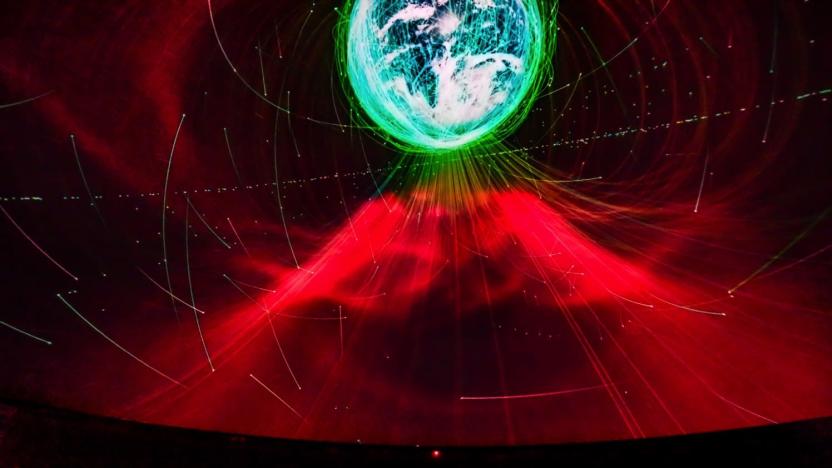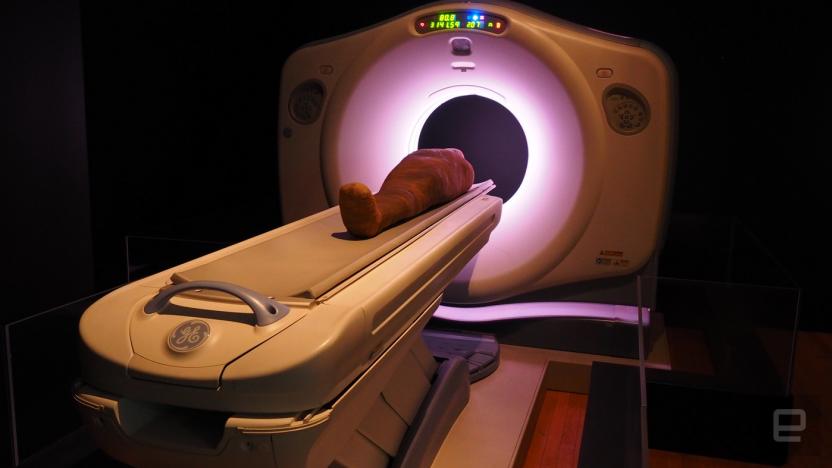amnh
Latest

The Hayden Planetarium’s new show celebrates unmanned space probes
The astronomy I learned as a kid was pretty limited — the Earth revolves around the Sun and, of course, the whole "My Very Energetic Mother Just Served Us Nine Pizzas" thing. Of course, that expression no longer applies because our understanding of the solar system is a lot more nuanced these days. Not just because we're adults now, but because the entire field has been revolutionized by probes, plumbing the depths of distant bodies and returning that data to us over decades. That deeper understanding of our solar system is at the heart of the American Museum of Natural History's new space show, Worlds Beyond Earth, but its unsung hero is the technology that made it possible.

Museums use CT scans to take the mystery out of mummies
Most of us have a rather cinematic view of mummies: a bandaged body rising out of a sarcophagus, stumbling toward whoever just disturbed their slumber. Of course, this could never happen and not just for supernatural reasons. Mummies are wrapped up pretty tight and are just too old and fragile to do anything. In fact, they're often too delicate for scientists to even study them, meaning many human remains have sat in storage for more than a century. However, an exhibit making its way to New York's American History of Natural History today not only takes them out of the warehouse, but also tells us more about the people wrapped inside, thanks to some help from modern technology.

A digital 'totem' leads the way in one of New York's oldest museums
Museums, for all the wonders they contain, have a reputation for being staid and musty. At their worst they've even been described as mausoleums. That's a problem when it comes to exhibits about an active, living culture like the Haida people of British Columbia. The American Museum of Natural History has taken it upon itself to change that perception of the native groups of the Pacific Northwest, implementing new technologies in its oldest hall to educate millions of visitors about these thousands of people living on the other side of the continent.

A rare fossil makes an appearance at the Natural History Museum
A nine-year-old girl patiently looked on while a technician pulled up a scan of her specimen. A 3D skull with a pointy beak popped up on the computer screen. The child, wearing clear-framed glasses and a light gray tee with a sequined star on the front, walked up to her father, who carefully put away the skull of a duck inside a round plastic container. They had found the tiny head on a beach and had decided to bring it in for Identification Day at the American Museum of Natural History in New York.

Neil deGrasse Tyson and friends gush over today's Pluto flyby
At around 7:50AM Eastern this morning, NASA's New Horizons probe reached its closest point to Pluto, around 7,750 miles away, where it unleashed its full array of equipment to give us our best look yet at the dwarf planet. It's the culmination of a nine-year journey across more than 3 billion miles -- and the scary thing is we won't even know until tonight if it succeeded. To celebrate the occasion, we joined Neil deGrasse Tyson, his colleagues and a theater full of science geeks at the American Natural History Museum to explore what the New Horizons mission really means. You can check out the full session, as well as some highlights from the event, below.


